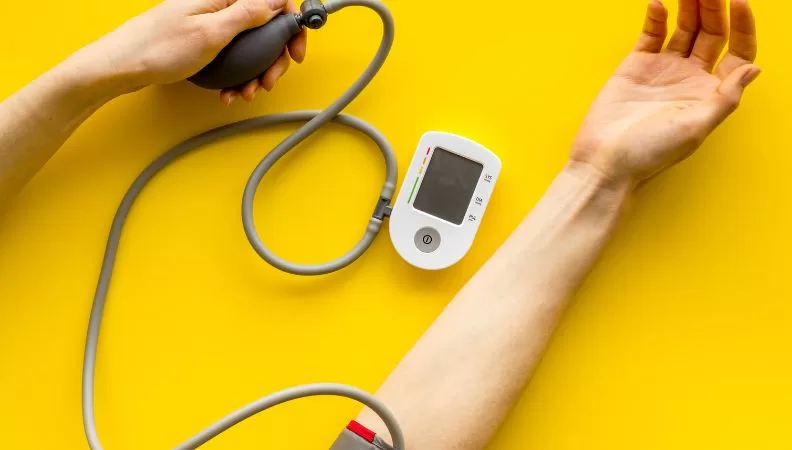Introduction: The Role of Wearable Devices in Healthcare
Wearable devices have evolved far beyond simple fitness trackers. In recent years, wearable health devices like fitness trackers, ECG monitors, glucose sensors, and biosensors have become essential for real-time health monitoring. These wearable health technologies enable continuous tracking, early disease detection, and personalized treatment, transforming healthcare. Wearable medical devices are revolutionizing healthcare by enabling a shift from reactive to preventive care. These devices monitor vital parameters like heart rate, blood pressure, glucose, and oxygen levels, empowering patients and physicians to make informed health decisions.
Wearable Health Devices: A Historical Overview
Wearable devices began as simple gadgets designed to monitor physical activity and track steps. On the other hand, due to the rising use of real-time health data, the complexity and functionality of these devices also increased. Current wearable devices are equipped with a variety of sensors that measure the following physiological signals:-
Heart Rate Monitors: These sensors monitor heart rate continuously, and thus it’s possible to derive information regarding cardiovascular health and fitness.
ECG (Electrocardiogram) Sensors: Used for continuous cardiac monitoring, wearables based on electromyography (ECG) can be used to identify dysrhythmias such as atrial fibrillation.
Blood Oxygen Monitors (SpO2): These devices are able to quantify blood oxymetry measurements and thus can be used to monitor respiratory health status and to diagnose problems such as sleep apnea.
Glucose Monitors: Wearables that measure glucose levels in real-time, assisting individuals with diabetes in managing their condition.
Blood Pressure Monitors: Wearable blood pressure monitors allow for continuous tracking, crucial for individuals managing hypertension.
The progression of wearable technology, fueled by advancements in miniaturization, sensor technology, and data analytics, has led to the proliferation of devices that cater to a wide array of health conditions, from chronic diseases to general wellness monitoring.
Wearable Health Devices: Benefits for Health Monitoring
Wearable devices provide many advantages to the patient himself and to the healthcare provider, changing the face of healthcare in many ways:-
Continuous Health Monitoring
Wearables provide real-time data on a constant basis, making it easier to monitor health conditions continuously rather than relying on sporadic doctor visits. Especially useful for chronic disease patients, such as diabetes, hypertension, or cardiovascular diseases. Continuous monitoring enables prompt response when it is needed and this can help avoid complications.
Early Detection of Health Issues
Wearable devices can warn individuals and physicians of potentially serious health concerns before those problems reach a crisis point. Eg, any abrupt increase in heart rate or decrease in blood oxygen content may reflect the start of myocardial infarction or respiratory desaturation. Early diagnosis facilitates prompt medical treatment and thus has a useful effect on prognosis.
Personalized Health Insights
By tracking individual health metrics over time, wearable devices provide personalized insights into a person’s health trends. This data can be used to personalize wellness programs, modify drugs, or prescribe lifestyle modifications. Tailoring care is more successful as it can contribute to a more positive outcome and health prognosis over the longer term.
Wearable Health Devices: Empowering Patients to Take Control of Their Health
With real-time access to their health data, patients are empowered to take an active role in their healthcare. Wearables enable individuals to track progress, set health goals, and make informed decisions about their daily routines. This feeling of agency can be followed by better health behaviors and health outcomes.
Reducing Healthcare Costs
Wearable devices are capable of decreasing healthcare expenses by averting the need for relatively expensive emergency procedures and hospitalizations. Continuous monitoring may be able to identify problems, which can minimize the need for emergency action and, therefore cost-effective management of chronic diseases.
Wearable Health Devices: Types and Their Applications
Wearable devices for health monitoring are available in various aspects, all of which aim at individual healthcare requirements. Some of the most common types include:-
Wearable Health Devices: Smartwatches and Fitness Trackers
Smartwatches and fitness trackers are considered to be the most popular wearable devices. Common models from Apple, Fitbit, and Garmin offer a variety of health-based tracking features, such as:-
- Step counting and calorie tracking
- Heart rate monitoring
- Sleep tracking
- Blood oxygen level monitoring (in more advanced models)
Wearable Health Devices: GPS for Activity Tracking
These devices suit general health and fitness monitoring and serve as an entry point into health condition monitoring such as some chronic diseases.
Wearable ECG Monitors
Wearable ECG devices, like the Apple Watch Series 4, enable users to record electrocardiograms and detect arrhythmias, such as atrial fibrillation. illation (AFib). It is especially helpful for people with a history of cardiovascular disease or people who suffer from unexplained palpitations/vertigo. It is clear that early diagnosis of AFib can prevent the occurrence of stroke.
Continuous Glucose Monitors (CGMs)
Continuous glucose monitoring (CGM) systems represent a paradigm shift for patients with diabetes.
Devices like the Dexcom G6 and Abbott FreeStyle Libre provide continuous glucose monitoring, showing the effects of food, exercise, and medication on glycemic control.
Smart Blood Pressure Monitors
blood pressure monitors allow users to track hypertension at home, storing data through apps or the cloud to aid in condition management and prevent complications.
Smart Rings and Biosensors
These rings like the Oura Ring and wearable biosensors track health metrics such as sleep, heart rate variability, and body temperature. With their unobtrusive design, these devices are becoming increasingly popular for providing useful health information.
Wearables for Specific Health Conditions
Engineers have specifically designed wearable devices not only for general health monitoring but also to control chronic diseases. Certain devices provide answers for heart conditions, diabetes, epilepsy, and so on.
Heart Disease Management
Wearables like the KardiaMobile ECG monitor help track heart health, detect arrhythmias early, and reduce fatal event risks. They also enable early identification of heart attacks and strokes.
Epilepsy Management
Individuals with epilepsy wearing wearable devices like Embrace by Empatica are able to experience seizure detection. These devices detect changes in activity and movement, alerting caregivers during seizures for prompt intervention.
Asthma and Respiratory Health
Wearable devices monitoring breathing patterns are invaluable for asthma and COPD patients. Devices such as Propeller Health monitor, inhaler-based use, and environmental conditions in order to control and prevent asthma attacks, etc.
Pregnancy and Fetal Monitoring
Maternities and perinatal medicine have also used wearable technology. The Owlet Smart Sock monitors fetal heart rate, oxygen levels, and motion, providing reassurance and early anomaly detection.
The Future of Wearable Devices in Healthcare
The outlook for wearable devices is promising, with ongoing innovation and a growing impact on healthcare.
Integration with AI and Big Data: AI-based information from wearable devices will help us to obtain increasingly accurate health prognostication and individualized therapies.
Better Sensors and More Accurate Data: Continuous developments in sensor technology will bring about still more accurate health measurements including, e.g., measurement of blood pressure or glucose values.
Telemedicine and Remote Healthcare: Wearables will just continue to improve telemedicine by helping to achieve remote consultations using real-time information and decreasing the requirement for face-to-face visits.
Healthcare Ecosystem Integration: Wearables technology will continue to penetrate into the larger healthcare system, providing a continuous flow between patients, clinicians, and payers.
Conclusion: Empowering Healthcare with Wearables
Wearable gadgets can change healthcare by providing real-time health tracking, better health prevention, and optimizing patient outcomes.
These devices empower individuals to manage their health while providing healthcare providers with essential data for informed decisions. Furthermore, as technology advances, the capabilities of wearables will continue to evolve, offering even more personalized and effective healthcare solutions. In addition, this evolution will lead to smarter health management, increasing both the accuracy and efficiency of healthcare delivery. As a result, patients will experience more tailored treatments, improving their overall well-being. Ultimately, this innovation will reshape the landscape of healthcare, making it more proactive and accessible.



